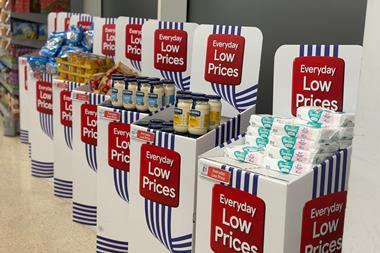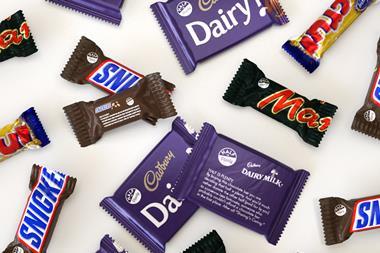No expense has been spared with the remake of Tesco's blockbuster Clubcard. But will the gamble on a double-points loyalty card prove an expensive flop? Sarah Butler reports
The movie-style billboard campaign for Clubcard 2 'Coming to a Supermarket Near You' hinted at a big-budget sequel to Tesco's groundbreaking loyalty scheme. It didn't disappoint, with a headline-grabbing move to offer loyalty card holders two points for every pound spent, twice as many as previously awarded.
Is this a big deal? One rival CEO is in no doubt as to the power of Tesco's Clubcard. "Tesco understands that even when customers walk away, as they have been doing recently, it can get them back because it knows who they are. It's easy to kiss and make up especially if you double the kisses."
Tesco first unrolled the double points offer in May, but it was limited to certain categories including clothing. One loyalty card expert described the move as a shock tactic designed as a "litmus test in the market to see what the programme can do".
Looking to attract a million more customers to the Clubcard scheme, so far half a million more shoppers have joined, enough for Tesco to declare itself pleased with the results. But what emerged from consumer feedback was that customers wanted double points right across the range.
Tesco has obliged and believes the double points offer will simultaneously prevent existing Clubcard holders from moonlighting with rival retailers.
"Clubcard has been a strong part of our trading proposition since 1995 and our view is that the market has been destabilised by the recession and the huge amount of trade moving around," says Tesco UK marketing manager Carolyn Bradley.
"Promotional promiscuity is running at a level that is not sustainable and this is a strategic move in the opposite direction."
But opinion is divided as to whether the giveaway is a case of Tesco playing its trump card in a bid to move away from direct price competition, or a desperate and expensive attempt to grab back the promotional initiative from rivals.
Some analysts argue that Tesco's double points offer is self-defeating. Research from Mintel shows only 6% of adults switch supermarkets because of a better loyalty card scheme, suggesting simply increasing rewards is a blunt instrument.
"With a headline promotion like this you give away a lot of money to people who you don't need to, and once you've done it there is no going back," says one analyst.
He calculates that the double-points Clubcard will cost Tesco between 1% and 1.2% of sales. The cost could be higher, but points can only be accrued on goods accounting for about 80% of total sales, while 25% of Tesco's sales are carried out without a Clubcard and only about 90% of the points awarded are ever redeemed.
Bradley says the additional costs, estimated at £200m on top of the cost of the old-style Clubcard, will be offset by savings elsewhere and will also be countered by an increase in customer spend.
And rival Nectar's managing director Jan-Pieter Lips believes the changes introduced with Clubcard 2 could make it a more potent strategic weapon for Tesco.
"It is a unique way for them to offer more value to the customer. They have seen customers are very responsive to the loyalty programme and if they give more value they believe customers will spend more."
In the current climate it is essential that loyalty schemes such as Clubcard improve the actual offers and deals that can be gained when redeeming points to suit customers' more straitened circumstances, says Stuart Evans, general manager of ICLP, an international loyalty card advisory agency.
"It used to be about treats, now it is about saving everyone money. They need to make the end benefit better so people can use their points and see the use in the programme." On the evidence so far, they will.
Sign in to comment on this article
Not logged in before? Register for FREE guest access today.
You will be able to:
- Read more stories
- Receive daily newsletters
- Comment on stories
Advert



















No comments yet